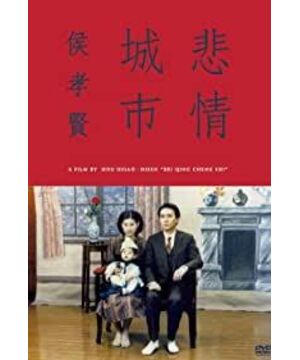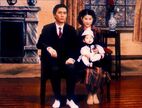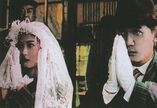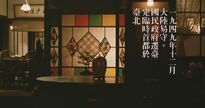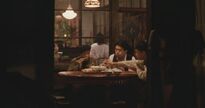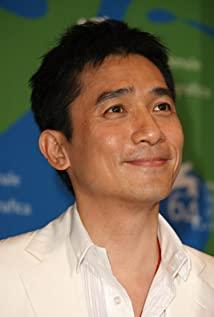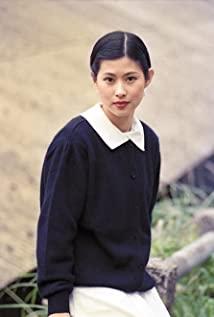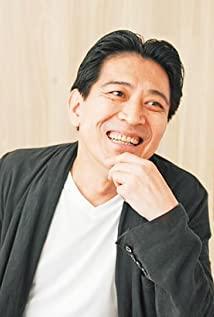"On the eighth day of November in the 20th year of the Showa Period, it was a good day and cloudy. With the letter of introduction written by my father, I went up the mountain to work at the Miners' Hospital in Jinguashi, and my brother was not free to teach, so I called him My friend Wen Qing came to pick me up. There is already the coolness of autumn on the mountain, and the scenery along the road is very good. Thinking of seeing such beautiful scenery every day in the future, I have a feeling of happiness in my heart.”
Take the train from Taipei City to Ruifang Railway Station and get off. Then walk to the opposite side of the station and catch the bus bound for Jinguashi. Jinguashi and Jiufen areas belong to the coastal mountainous areas in the northeastern part of Taiwan. Our car took the Binhai Mountain Road, which continued to meander along the coastline. On the left side of the mountain road, the dwellings gradually descend with the mountain, and the sea water of the Pacific Ocean is looming in the gap between the mountains. When the car drives to an unobstructed place, the blue ocean can be seen, and there are hills like Dai who extend out from time to time. , there are white sails dotted, and the sky light passes through the clouds quickly at the place where the mountains and the sea meet.
This is the mountain road that Kuanmei and Wenqing walked through. In the same November, there is the coolness of autumn, and the scenery along the road is very good.
In fact, [City of Sadness
] was not what it was supposed to be. At first, Hou Hsiao-hsien just wanted to pull the weird combination of Zhou Runfa and Taiwanese opera artist Yang Lihua to make a lively and fragrant Jianghu romance. piece. In the story, Yang Lihua is the eldest sister of the restaurant, and Brother Fa came from Hong Kong to investigate smuggled goods. The two met and clashed, and then some subtle emotions emerged. Zhu Tianwen wrote in the article "[The City of Sadness] Thirteen Questions": "In line with the background of this kind of story, Taiwan seems to be only placed in Keelung Port and its hinterland Jinguashi, Jiufen, Beitou, and Taipei, which are complex and old. It has already developed." Although under Hou Hsiao-hsien's obsession with cleanliness, the love of the rivers and lakes was filtered into today's chills and sorrows, but the story was still left in Jinguashi and Jiufen.
As early as the Guangxu period, Jinguashi was prosperous for a while because of its gold mines, which is what Zhu Tianwen called "complex and long-term development". During the Japanese occupation period, the Japanese authorities even took the mining area as their own. [Speechless Hill] tells that history. After 1973, the gold mines gradually dried up, and the prosperity of the past was quickly exhausted as described in Wu Nianzhen's [Duosang] and Hou Hsiao-hsien's [Love in the Wind]. Fortunately, there is a "Gold Museum Park" on the hillside of Jinguashi. Collect the past years here. However, the history of the mining area is not the focus of today's narrative. We just follow the bamboo sedan chair that Kuanmei sat on Jinguashi, to capture the traces of Wenqing and Kuanmei's life.
Walking into the Gold Museum, I was overjoyed to see the words "[Sad City] Scenery Location" on the tour guide's map. A few meters into the scenic spot, there is a winding stone step on the left, down the stone step, and the stone walls on both sides are covered with thick moss that has accumulated for many years. After passing through the residence of the former director of the mining firm Kikujiro Sanmao, and the "Shiyu Middle School" transformed from the Japanese public school of the year, go down a few meters and see a very familiar staircase in front of you. Rong took Teacher Lin, Reporter He, and Teacher Wu through the crowded market and walked up the stairs, then pushed the door and walked into the octagonal wooden pavilion on the right, which was Wenqing's photo studio. Although I checked the information before coming here, the octagonal pavilion was destroyed in a typhoon, but when I really saw the ruins, I was still a little disappointed. shape, some sundries and potted plants are stacked in between.
On November 25, 1988, [Sad City] was officially launched here, and the filming was a scene of Wen Qingxiu played by Tony Leung. Legend has it that the octagonal pavilion here was a well-known barber shop during the Japanese occupation period. During the shooting of [Sad City], there were two bulky barber chairs in the front hall, and the back hall was converted into a photo studio. People, hair washers, haircutters." Standing in the ruins, I guessed where Wen Qing's traces were here, where the tune of "Rolled" was played silently, and wrote on the paper "There was a voice before the age of eight, I remember the sheep screaming, and the children's opera Danjiao sings... "Kan Mei looked sad.
Go down the stone steps from the Bajiao Pavilion, turn right and go straight. After crossing Tongshanli, you will arrive at the former site of the Mining Hospital, which is the Jinguashi Hospital where Kuanmei worked. It's just that nearly 20 years have passed, just like the octagonal pavilion, the hospital no longer exists, and now it has become a parking lot, and even the ruins can't be found, leaving people empty. Standing in the center of the parking lot and turning around, I adjusted the angle of view like the camera in the movie that was set inside the hospital to shoot outwards. The scene in the footage included Wenliang's return, Shizuko's farewell, and the turmoil on the second day of "228". There is also the birth of Ah Qian, which is a period of time under the eaves of the hospital.
It was the golden flower season in Jinguashi, standing in the parking lot and looking at the distant hills, I saw a large field of reeds in full bloom, blown by the sea breeze like waves of silver waves. I remembered the last letter that Kuan Mei wrote to A Xue: "September is getting colder, the mango blossoms are blooming, and the mountains are white and snowy."
Jiufen
is a somewhat strange name. In fact, as the name suggests, there were only nine households here in the old days, and after the daily necessities were delivered by sea, they were divided into nine parts. Jiufen also developed gold mines in the late 1890s, but it was even more prosperous than Jinguashi, which can be seen from the aliases of "Little Shanghai" and "Little Hong Kong". But in the same way, after World War II, the mining industry declined, the population was exodus, and the hustle and bustle of Jiufen returned to silence. Before filming [City of Sadness], Hou Hsiao-hsien visited Jiufen several times. Jiufen was sparsely populated at that time, but in the depression Hou Hsiao-hsien could still touch "the traces of time", "I feel that this kind of thing is very suitable for me [ The tune in "City of Sadness], especially in winter, it's often a little rain." As a result, Jiufen, the mountain city, became one of the main scenes of [City of Sadness], and the film reached the top at the Venice International Film Festival After that, along with Hou Hsiao-hsien and the box office, there was also the crowd of Jiufen.
Take the bus from Jinguashi back to the railway station, and get off at "Jiufen Old Street" on the way. This is one of the main passages leading to Jiufen, Jishan Road. The day before, when I interviewed Wu Nianzhen, a native of Jiufen, I was warned that there are too many tourists in Jiufen, but when I first entered the old street, I was still frightened by the crowd. As the crowd walked slowly forward, there were many souvenir shops and snack bars on both sides. After moving for nearly an hour, I just trudged out of the old street and came to the main road "Shuqi Road". Shuqi Road is a steep stone-stairs road, crowded on both sides with row upon row of shops, as well as various teahouses, wine shops, and cafes. Compared with Jinguashi, which is quiet and far away, it is cramped and noisy. Hou Hsiao-Hsien himself could not help but sigh with emotion: "[Sad City] makes me feel guilty." Because the asphalt roofs are gone, the old street bungalows are gone, and the beautiful Jiufen is gone.
Going down Shuqi Road, I saw a plaque with black characters on a red background hanging on the outer wall of a two-story building from a distance. Walking to the door of the store, there are several signs marked here as the shooting location of [Sad City] and some stills of [Sad]. There is also a plaque of "Sad City" on the left side, and the red paper on the backing has been Some slight flaking. Above the wooden door is a signboard with the words "Little Shanghai" written on it. That year, Japan was defeated and evacuated from Taiwan. Wenxiong's restaurant reopened. On the opening day, he took a family photo at the door. Behind him were the three neon characters of "Little Shanghai". It's just that the location of "Little Shanghai" in the film is actually located in the Great Lakes of Miaoli, and the restaurant here is actually called "Golden Restaurant" in the movie, probably because the name is not as loud as "Little Shanghai", so I borrowed it. That day, everyone cleaned up the dust for Teacher Lin, Kuanrong, Reporter He, Teacher Wu, Kuan Mei, and Wenqing gathered around a table, drinking and eating hot pot, listening to Wu Nianzhen (Mr. Wu) talking about the various farces during the regime change, So unhappy.
Walking into the restaurant, a wooden wall divides the interior and the terrace into two spaces, where all kinds of old wooden furniture, cabinets, carved doors and windows, and rice threshers are placed. Sitting on the terrace and ordering some food, I looked up and saw that the one adjacent to Little Shanghai was actually Shengping Theater. Shengping Theater is the earliest theater in Taiwan. It closed its business in 1986. Today, it is abandoned and overgrown with thatched grass. Only in Wu Nianzhen [Duosang] can we get a glimpse of the scenery of that year. ]'s hand-painted poster with bright colors, it should be someone who is carrying out special maintenance, and asked the proprietress why there is no poster of [Sad City] here, the proprietress smiled and said that this should be asked by the people in the administration. The proprietress also said that we could see the sea view from our seats, but now a restaurant has been erected in front of us, covering the scenery tightly. I remembered it was the same day, when the Kuanrongs were drinking to their heart's content when they suddenly heard the singing of "The Trilogy in Exile". They pushed open the stained-glass windows, and while the wine was enjoying, they sang in unison outside the window: "September 18, September 18, from that tragic time, away from my hometown..." The shots are of the mountains and the harbour in the twilight.
It was getting dark very fast on the seaside mountain. It was only four or five o’clock, and it was already dark. Lights were lit up in every corner of Jiufen Mountain City. On both sides of Shuqi Road, red lanterns were lit from the foot of the mountain to the top of the mountain. The teahouses and restaurants became more and more noisy. Chen Qizhen also sang in "The Coffee Shop of Jiufen": "The crowd here is noisy all night." It's just that the years are quiet now, the world is stable, and in the clutter of voices, the endless sadness of seventy years ago has disappeared.
Originally published in "Watching Movies Midnight"
View more about A City of Sadness reviews


